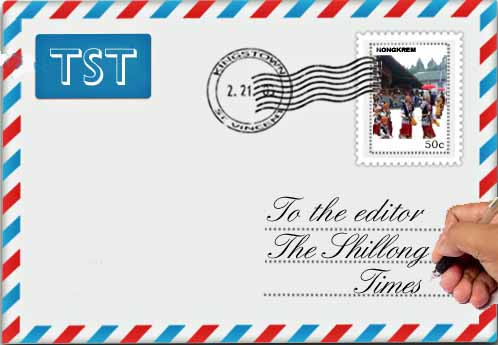
Editor,
The write up published in The Shillong Times, Tura, July 16, 2024 on the dwindling of the reading habit is really worth noting it. Yes, the reading culture these days in Meghalaya has lost its past glory. The drifting interest from reading be it newspapers, magazines and the comic magazines for teenagers is really astounding. Of course, reading academic books and career oriented magazines remains unchanged but leisure time reading these days has really gone down.
There was an era where one’s mornings were incomplete without reading newspapers and sports magazines. That was a beautiful era which will perhaps not return. The joy of going through the daily newspapers with a hot cup of morning tea is indefinable. Those moments provided a different kind of ecstasy. At present the book stalls are bereft of colourful magazines and novels. One can only reminisce the past with some regret because reading a variety of books and magazines has its own uses.
Yours etc.,
Deepal Chhetry,
Tura.
ILP imperative for Meghalaya
Editor,
Apropos of the news item “Paul blames migration on locals’ reluctance to work” and “No question of restricting Assam tourist vehicles from entering the state, says Paul.” (ST July 19, 2024), the Inner Line Permit system, implemented in several North-Eastern States of India, including Arunachal Pradesh, Manipur, Mizoram and Nagaland is designed to regulate the entry of outsiders into these regions. Prior to Independence Inner Line Regulation was to protect the interests of the Crown but now the primary purpose of the ILP is to protect the indigenous cultures and prevent influx of people that might disrupt not only the local way of life but alter the demography of a microscopic tribal population of the country. Hence, Paul Lyngdoh, Minister Tourism rightly stated “We have to fight for ILP in tandem with NGOs. It cannot be NGOs versus Meghalaya. It should be NGOs and the Government of Meghalaya working together to take the Assembly resolution to its logical end.” Together We Can. The statement of the Minister is rational and pragmatic that our regulatory mechanisms should be in place instead of restricting Assam tourist vehicles from entering Meghalaya.
The North Eastern Region or for that matter Meghalaya is a labour deficient economy in many aspects and more so when it comes to skilled and highly skilled labour, we still depend on labour from other parts of the country for various public and private works. We cannot shy away from this reality till our own labour is skilled up in order to get the economic wheels rolling for employment and income generation so as to sustain the economy which is still dependent for both food and non-food items from outside the region. There are those who argue that ILP is a deterrent for economic growth but practically speaking the ILP system can add extra steps for tourists, it does not necessarily impede tourism. In fact, it helps manage and control tourism in a way that preserves the natural beauty and cultural heritage of these beautiful hills of Northern Eastern India. Many travellers still visit these States, and the process of obtaining an ILP is generally straightforward. However, some argue that the ILP system might deter spontaneous travel plans and could be seen as a barrier for those unfamiliar with the process. Despite this, the Inner Line Permit is crucial for maintaining the ecological and cultural balance in these sensitive regions of the country.
Yours etc;
VK Lyngdoh,
Via email
Dismal performance in civil services
Editor,
Meghalaya’s quest for bureaucratic brilliance appears elusive each Year. While the Civil Services Examination (CSE) topper’s list often features candidates from across the country, Meghalaya has seen a concerning lack of representation in recent years. There are complex reasons behind this under-performance, and addressing them requires a collective effort.
Despite having a number of premier Institutions in the State with very high standard of education especially in Shillong with ICSE & CBSE background, the State has not produced successful aspirants for the past few years. It is a fact that there is a lack of strong support system. Unlike in some other states with a well-established civil service bureaucracy, Meghalaya may not have a wide network of mentors and seniors to guide and inspire young aspirants.
To bridge this gap, the state government may collaborate with the premier Institutions of the State to play a proactive role, perhaps, even local NGO’s or other civil society groups can take up the initiatives such as sponsoring coaching programs, providing scholarships for civil service aspirants, and creating a mentorship network, which can indeed make a significant difference.
Equally important is creating awareness about the civil services exams at the school level. Exposing students to the possibility of a career in the civil service, early on, can spark interest and encourage them to dream big. Teachers and parents alike can play a major role in inculcating a more supportive eco-system and by fostering a culture of excellence; Meghalaya can witness a rise in its civil service aspirants and contribute more effectively to the nation’s administrative machinery.
Yours etc.,
R. Kamar,
Via email